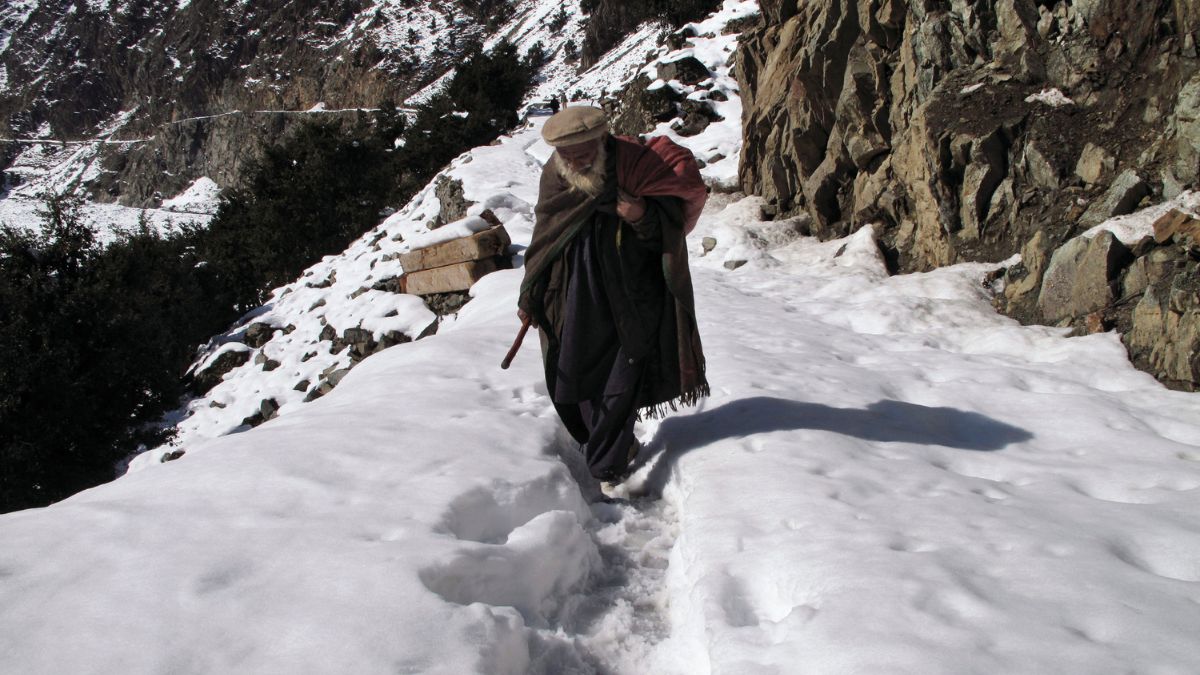The body of a man who went missing in Pakistan 28 years ago has been found. In a surprising incident, the corpse was discovered remarkably preserved in a melting glacier in the country’s remote and mountainous Kohistan region.
The man had gone missing in the area in June 1997 after falling into a glacier crack during a snowstorm while travelling through the remote Supat Valley. The entire saga sounds no less than a movie. Here’s what happened.
Man goes missing in Pakistan
A father of two, Naseeruddin, alias Hajo, from the Saleh Khel tribe, disappeared in 1997. He was travelling with his brother, Kaseeruddin, on horseback on the day he went missing, as per a BBC report.
Police said a family feud forced them to leave their home. The family had to migrate from Palas Valley to the nearby Alai tehsil in Pakistan ’s Khyber Pakhtunkhwa province. Naseeruddin’s younger brother, Gardezi, was killed in a so-called honour-related dispute, locals told The Express Tribune.
Kaseeruddin recalled that on the day his brother went missing, the duo took an unconventional route through the mountains in fear of any potential threats, the Pakistani daily reported.
The brother told BBC Urdu that they had arrived in the Lady Valley of Kohistan in the morning. Sometime in the afternoon, Naseeruddin went into a cave. After he did not return, Kaseeruddin said he looked for him inside the cave. When he could not find him, he went and sought help from others to search further.
As per The Express Tribune, Kaseeruddin said that they heard gunshots during their return journey, following which they tried to evade attackers. It was then that Naseeruddin tried to hide in an icy cave, never to be found until now.
Impact Shorts
More ShortsBody is found 28 years later
It was a chance that Naseeruddin’s body was found. A local shepherd named Umar Khan stumbled upon his remains on August 1. As per eyewitnesses, the clothes and physical features of the body were largely intact.
An ID card was found on the corpse with the name Naseeruddin.
The recent glacial melt revealed the missing man’s body. The region has reported decreased snowfall in recent years, leading to glaciers melting faster as they become exposed to direct sunlight.
How glaciers preserved the body
Experts say the discovery of the body shows how climate change is exacerbating the melting of glaciers . Dr Adnan Ahmad Tahir told The Express Tribune that glaciers in northern Pakistan are melting quickly. Last month, Khyber Pakhtunkhwa and Pakistan-occupied Gilgit-Baltistan recorded unprecedented temperatures, which sped up glacial melt and exposed long-hidden objects and human remains.
“What I saw was unbelievable,” the shepherd who found the body told BBC Urdu. “The body was intact. The clothes were not even torn.”
But how did this happen?
Speaking to The Express Tribune, Dr Muhammad Bilal, a professor at Comstats University Abbottabad, said that extreme cold, low humidity and oxygen, and snow cover inside glaciers lead to a natural mummification process that can preserve a body for decades, even centuries.
With inputs from agencies


)

)
)
)
)
)
)
)
)



